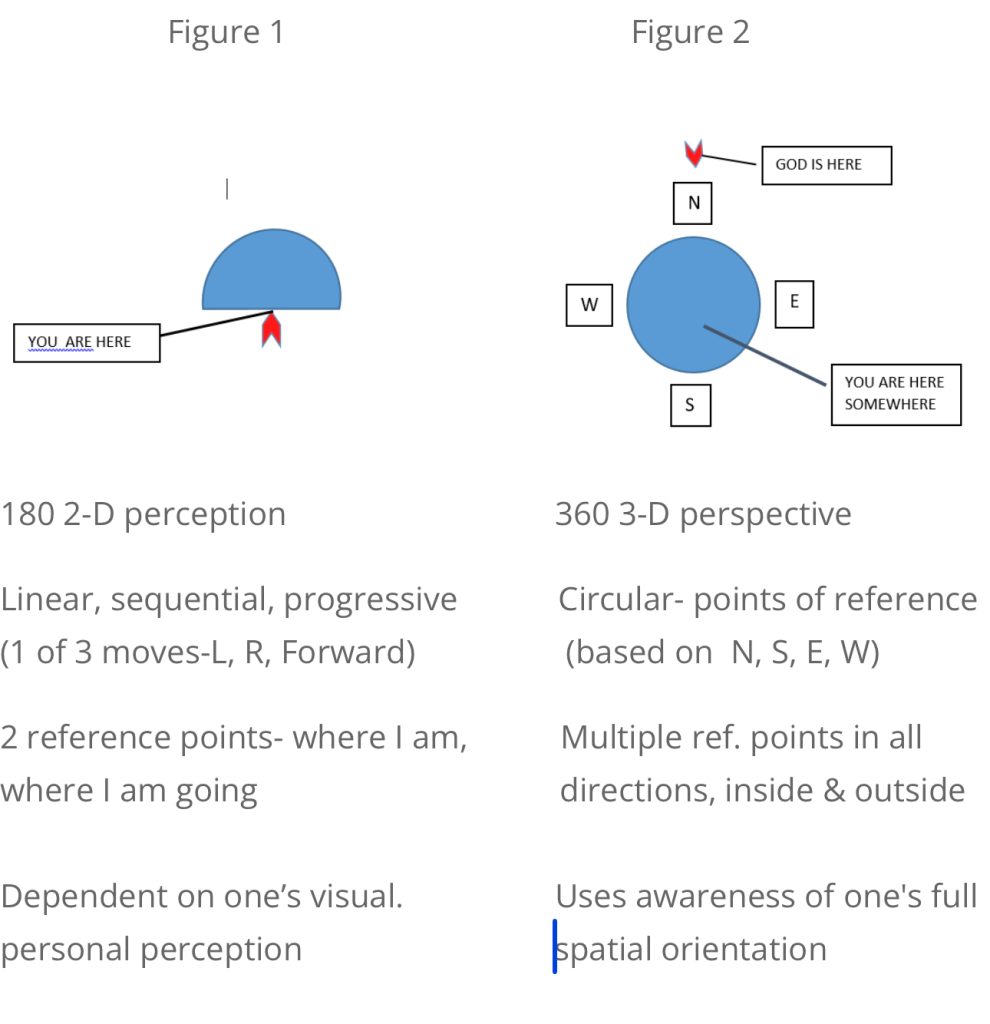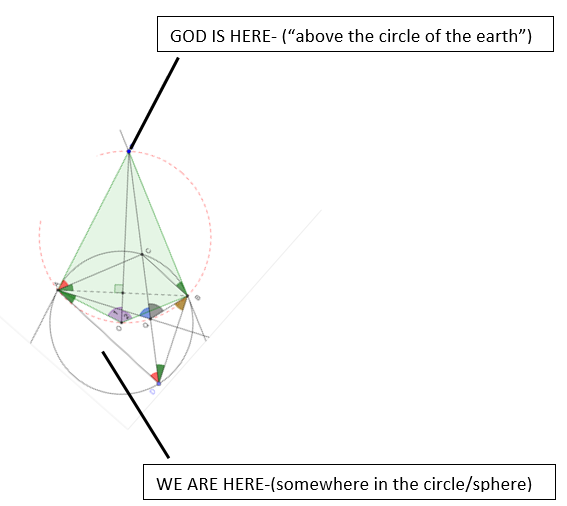I was driving to our daughter’s new residence after a year of Covid isolation and realized I needed to refresh my memory of how to get there from I-65.
The last time I’d been to their home, it had been by way of US Hwy 31 and State Route 280. So I called her to remind me of the exit and subsequent directions.
She described the route – turn right at the first Oxmoor Rd. exit, go through the next couple of lights and curve slightly to the right as the road goes down a hill. You’ll bear left at the bottom of the hill and stay on that road until you get to the park. Turn at the light at the park. “Right at the park?” I asked. No, she said, turn left at the park. After we hung up I had to think about the route directionally. I was moving north. I would turn east then I would bear southeast down a hill, then bear left and continue straight, winding along on that road until I got to the park. I couldn’t remember the park’s orientation to the intersection from which I would be approaching but it seemed that her family’s condo was on the northeast corner of the park, if I recalled correctly.
It suddenly occurred to me that she had given directions “turn right, bear right, bear left, go straight, turn left, go straight….. and I had translated her directions into my mind into map directions “from north, go east, bear southeast, the bear northeast andvwind along until l get to the light at the park, then check my bearings and find her building at the northeast corner of park.”
My daughter had located her home for me according to markers defined by landmarks in a 180 degree field of vision frame of reference- moving from one point to another by a series of sequential moves within that 180 degrees- “right, straight, left.” I, on the other hand had mentally translated her directions into a 360 degree “map” to think about the relationship of all of these points along the way to one another and to my present position and her position, as well- “north, east, south, west”, as if looking at a map from a higher perspective to orient myself to get to where I was going from where I was. I realized that we were using two different ways of considering spatial orientation and directions for travel, which is a function of time and space and motion. She and I had often been unaligned in our perspective on things over the last couple of decades.
This realization suddenly caused me to ask, is this part of the reason why…. the way we “see” things?? I had the feeling of being on the precipice of an “aha” moment that was pregnant with meaning. What does this mean God? What is the significance of different ways of thinking about where one is at the present and how to tell someone or hear someone else describe how to get somewhere else? There were other times I had been vaguely aware that there are people who navigated by landmarks or from a self/refeferenced pattern of moving and other people who navigated by envisioning moving on a external “map” directionally. The thought intrigued me and suddenly I had an image come to mind, I “saw” two figures in my mind’s eye:

As I thought about these two ways of thinking about locating oneself within a space and moving from one place to another, the fixed reference points of N,S,E, and W provide definitive criteria that don’t change and to which each movement can be cross-referenced to locate it in relation to the origin and destination points. As I have understood it, this is the basic operational principles of Global Positioning Systems (GPS). Any point in the 360 degree 3-D view of longitude and latitude can be located using this second way of thinking.
As human beings accustomed to traveling in vehicles, we generally move with a forward trajectory with the 3 frames of reference that are located relatively close in to one’s own position- straight forward or a measure of up to 90 degrees to the left or right. It is a subjective process, based on one’s own sensory 180 degree field of vision which can change as one moves about, but remains pretty much the same in scope and size. How much space one covers and what one finds as one moves will depend upon where one begins and how much one turns one way or the other. The 180 degree horizon perspective is subjective, based on the observer’s sensory field of vision. The 360 degree perspective is more objective, as the location is described in relation to the whole, seen and unseen, in which one then visualizes herself.
By simultaneous evaluation of one’s position using 4 fixed/defined points of reference, including behind where one is presently, one can move about more definitively, objectively and with greater likelihood of getting to one’s destination with a minimum amount of meandering around lost, as well as the ability to cover as much territory as desired, up to the maximum territory contained within that which is defined by the 4 fixed points of reference. Surveying, GPS locating, etc. is accomplished by the latter 4-points standard for points of reference.
How one thinks- subjectively from one’s own location or objectively from the perspective of a location outside of one’s self, as if looking at a map that takes in a larger scope, makes a big difference in what one sees.
As I was pondering these differences I suddenly had several scriptures and biblical principles pop into my head….
The first one was this scripture from Isaiah:
The Lord sits above the ‘circle of the earth’. I have tended to think of ‘circle’ as actually meaning spherical shape of the earth. However, one commentary offers ‘vault’ is an alternate description more aligned with the Hebrew word. A vault is a safe space that is defined by well-proportioned and secure boundaries. The circle of the earth, both its geography and its uniquely observable astronomical specifications in the larger cosmos, allow us to define “time” on our planet by means of observing the external points of reference as it moves through space over time. Its rotations and revolutions are securely understood, accurately defined, predictable, and with boundaries that have been ascribed to it for sustaining life. Only God could have done that! Isaiah 40 is a testimony to that reality. God created a ‘vault’ and put his treasured creation in it! And he sits above it, outside of it, and has a much larger perspective than those of us who are located on/within the ‘vault’.
Isaiah 40:22: “It is He who sits above the ‘circle of the earth’, And its inhabitants are like grasshoppers, Who stretches out the heavens like a curtain And spreads them out like a tent to live in.”
Here is a defining phrase that reveals God’s construction of the heavens as a boundary around the Earth that provides safety and comfort and defines its parameters. We live in a “tent” here on the earth created by the heavens around us. The whole concept of time is predicated on our view of the cosmos and the impact of the motion of the earth and other elements of the cosmos, as observed by us subjectively from our position on the earth. Because this construct is our frame of reference, “time” is a measure defined by our geophysical understanding of where we are and how our environment impacts us. God is not limited by geophysical boundaries of time and space, and is not limited by them as we are. It occurred to me in that moment that seeing this as a ‘simple’ description of the difference between God’s existence as Spirit, unencumbered by the limitations that we humans on earth have, explains aspects of God and concepts in the Bible that can be difficult to grasp.
Then I had the thought that by God sitting above the circle of the earth, it is referring to God sitting outside the time and space that defines humans’ physical existence. A sundial can represent the “circle of the earth” in a time-mode. It gives an accurate, if not minutely specific measure of time based on the natural movement of the earth. It operates based on the relativity of the location in which it sits to the movement of the Earth through its annual course around the sun and its daily course in rotation on its own axis. God has a perspective on it all, being outside of the limitations of the physical 4 fixed frames of reference defined by life on Earth for us. It suddenly made the omnipresence and omniscience and omnipotence of God comprehensible. God, as Spirit, is both at a distance from the limitations we have that are defined by the physical realm and God is also within the frames of reference within which each of us operates as we move in our own linear progressive perspective of time and through space. God, unlike humans, is not confined by either time or space. As the Bible says, “God sits above it!” As such He moves about forward, backward, left and right in both time and space at will. From God’s perspective outside the earth, He has view of and connection with every single spot on the earth. We can only skillfully and accurately move forward, with some bilateral mobility, or stand still in the orientation of where we are, on the earth in the “vehicles” (our bodies) that bear us. Moving backwards is very limited. One may turn around, facing the opposite direction, but the subjective 180 degree field of vision still exists, regardless of the direction one faces. God, however, can be viewed as having eyes looking in all four directions simultaneously.
As I thought about that principle I saw in my mind’s eye something more complex and complete, but similar to this- which is the geometric working out of the relationship of a point outside of a ‘circle’ to the circle itself and how penetrating “rays” or lines of vision from the external point to any point on the ‘circle’ can be drawn and defined.

It was at this point in my drive that I got excited about this insight of how the two perspectives can result in misunderstanding and miscommunication between two people in something as simple as directions. But the principle, applied to worldviews and views of oneself and others, has applications for simplifying discussions of our differences and moving closer to one another by understanding one another’s perception and working to gain a shared perspective that embraces both perceptions. I was laughing and praising God as I drove along the highway, thinking about how to share what I was thinking about with my discipleship students. I was delighting myself in God’s majestic created order for us and for himself with us. I also recalled the Scripture, Isaiah 55:8 “For My thoughts are not your thoughts, Nor are your ways My ways,” declares the Lord. (Laughing, “Don’t I know it!)
the only way to find common ground is to shift away from self-focused subjective sensor perception to an objective, external God/focused perspective. (CBB 11/12/25)
![MPj04389070000[1]_phixr](http://disciplerofself.com/wp-content/uploads/2015/03/MPj043890700001_phixr.png)